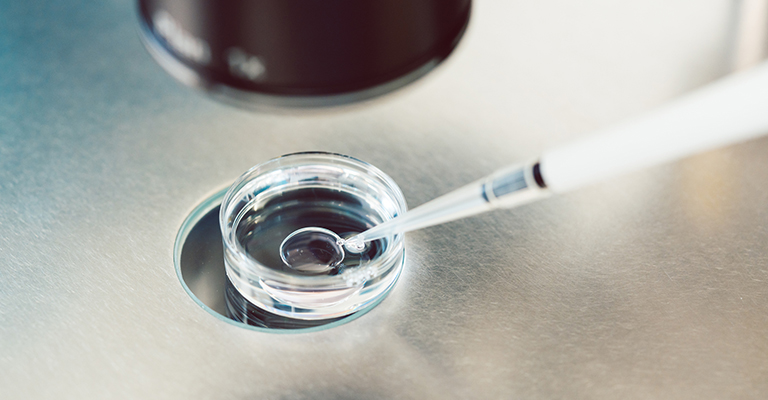Updated by the Progyny Clinical Team — August 2025.
In vitro fertilization (IVF) lab advances have improved how embryos are grown and selected. Your fertility team can now culture embryos to the blastocyst stage, which makes it easier to choose those with the best chance of success. Some embryos reach this stage on day 5, while others take more time and reach it on day 7.
Day 7 embryos are less likely to result in pregnancy, but they still have a meaningful chance. Here’s what you should know about why slower growing embryos may have lower success rates and why they still matter.
Timing and implantation
In the past, slower growing embryos were less likely to succeed in fresh transfers. This often happened because the timing between embryo growth and the uterine lining wasn’t aligned.
After ovulation, or after your egg retrieval, progesterone levels rise to prepare the uterine lining (the endometrium). The “window of implantation” is short — only a few days.
If an embryo doesn’t reach the blastocyst stage in time, the lining may no longer be ready. Today, most labs use extended culture and advanced freezing and thawing methods. With these, day 7 embryos can be frozen once they reach the blastocyst stage and then transferred later in a cycle where your uterine lining has been prepared at the right time.
Chromosome differences (aneuploidy)
Day 7 embryos are more likely to have aneuploidy, which means they have the wrong number of chromosomes. A healthy cell has 46 chromosomes. With aneuploidy, an embryo may have extra or missing ones.
Embryos with aneuploidy are less likely to implant or develop into a healthy pregnancy. In most cases, they do not result in a live birth.
Your reproductive endocrinologist may recommend preimplantation genetic testing for aneuploidy. In this test, a few cells are removed from the embryo before freezing, and the chromosomes are checked. By selecting embryos with the typical number, your care team can improve your chances of pregnancy and a healthy birth — even with day 7 embryos.
Other factors that may play a role
Even when your uterine lining is prepared at the right time and your embryo has the correct number of chromosomes, day 7 embryos still tend to have lower pregnancy rates. Embryos that reach the blastocyst stage earlier, on day 5 or day 6, are more likely to result in pregnancy.
Researchers are still learning why this happens. Some studies suggest that day 7 embryos may function differently at the genetic level compared to faster growing embryos. Scientists continue to explore:
- What factors cause some embryos to grow more slowly
- Whether lab techniques or stimulation can improve these outcomes
- What slow-growing embryos can teach us about fertility overall
Why day 7 embryos still matter
Even with lower pregnancy rates, day 7 embryos can result in healthy pregnancies. These embryos are especially important if you have only a few available. Day 7 embryos can add to the number that can be frozen and later used in treatment.
With extended culture, advanced freezing, genetic testing, and carefully timed transfers, these embryos have the best possible chance of success. For many patients, that means another opportunity to grow their family.
If you have questions or concerns, Progyny is here for you. Please contact your Progyny Care Advocate for support.
Disclaimer: The information provided by Progyny is for educational purposes only and is not medical advice. Always consult a qualified healthcare provider for medical guidance.
